During World War II there were several military bodies from various countries that joined the Wehrmacht or were with it to fight together against the USSR.
We Spaniards know, fundamentally, the Blue Division, but there were other cases:Finns, Romanians, Croats, Bulgarians... In general, all with the common denominator of professing a visceral anti-communism. But one of the most curious was, without a doubt, the ROA , stands for Rússkaya Osvobodítelnaya Ármiya (Russian Liberation Army).
In reality, the ROA was a ghost contingent that for a long time only existed de facto on paper and whose members did not constitute their own unit until the winter of 1944, before dividing themselves into a multitude of battalions assigned to the Eastern front due to the distrust of the German command .
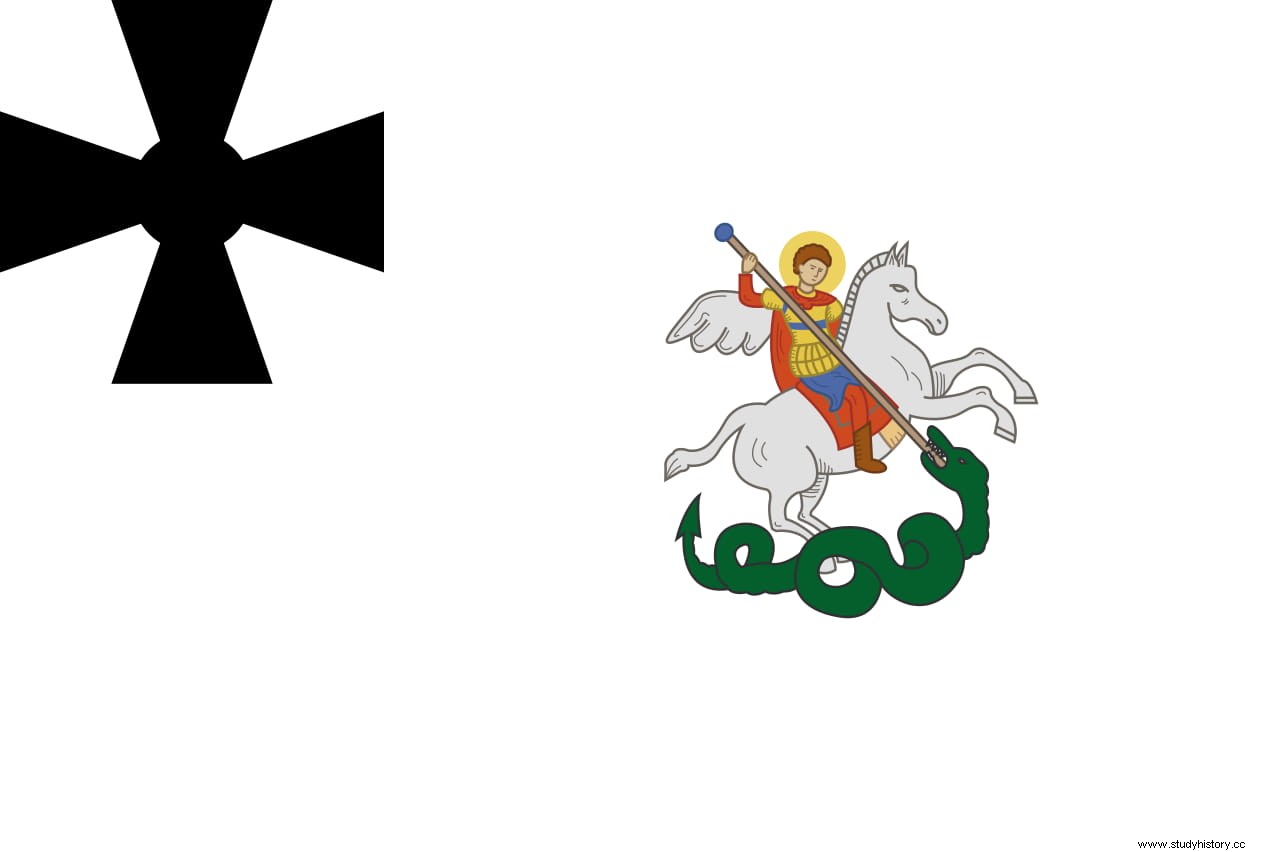
The soul and root of that strange unborn and dispersed army was a Soviet general named Andréi Vlásov , a Russian born in 1900 who was prompted by the outbreak of the Revolution to drop out of seminary to join the Red Army and pursue a brilliant military career.
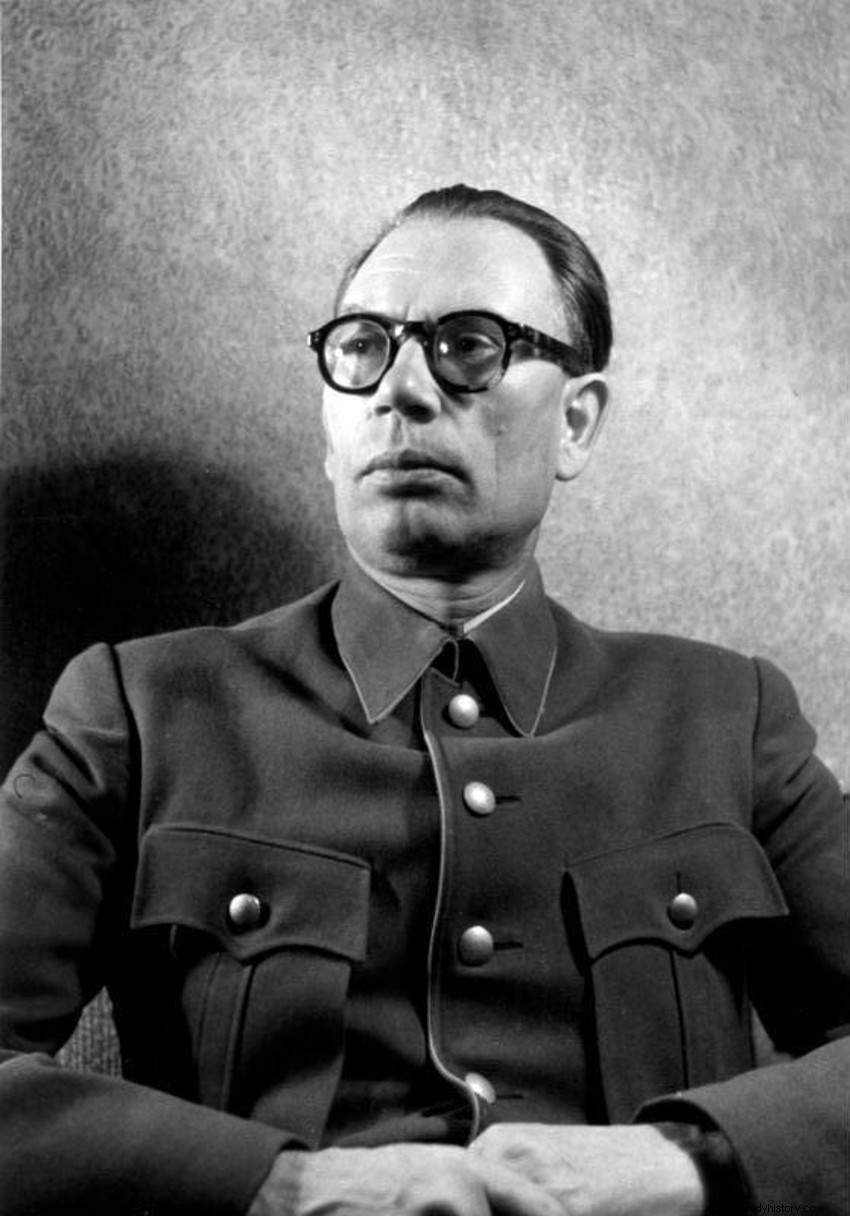
Being a member of the Communist Party, getting the position of military adviser to the Chinese Chiang-Kai-Sek (who awarded him the Order of the Golden Dragon) and leading several successful actions during the so-called Great Patriotic War (the one waged by the Soviets on their soil against the German invasion) earned him the trust of Stalin and to be awarded the Order of Lenin (one of the most important decorations in his country, which was awarded by the Supreme Soviet). However, his failure to break the siege of Leningrad, which ended in a massacre, and his refusal to be rescued from the encirclement in which he had been trapped marked the beginning of a radical turn in the life of him .
Because finally, after a bizarre escape attempt, he fell into the hands of the enemy and was sent to a concentration camp for officers in Ukraine. It was the summer of 1942 and during his confinement he became involved with several White Russians with whom he agreed to found an anti-revolutionary movement, for which he sent an exhaustive report to the Germans proposing to cooperate.
Of course, they did not miss the opportunity and sent him to Berlin, before Goebbels, to develop the design of what the Russia Liberation Movement should be. . This is how the ROA began to take shape, the armed wing that, in conjunction with the Wehrmacht he would throw the Bolsheviks out of power and establish a democratic system.
Oddly enough, Vlasov bought it - perhaps because the plan included giving him a job in the future provisional government - and began to recruit volunteers among the prisoners Russian war fighters, while the Luftwaffe he also dropped propaganda pamphlets in Soviet trenches encouraging them to defect and join.
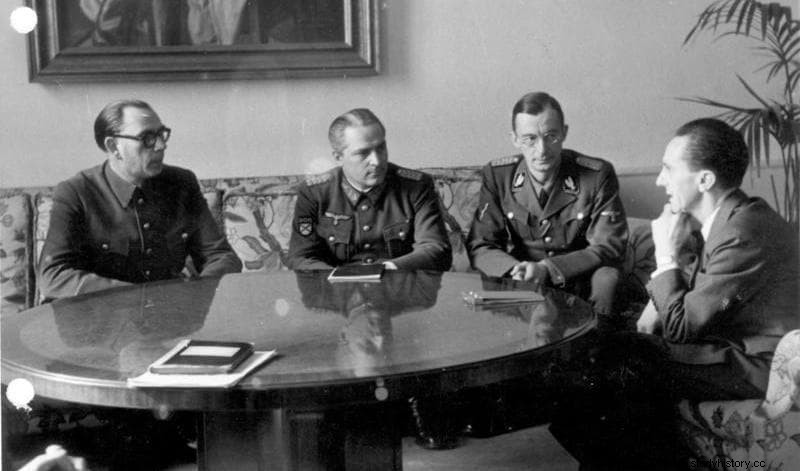
But a sufficient number of troops was not gathered, because in a show of optimistic ingenuity, more than a million and a half men had been foreseen and the enlisted, some hundreds of thousands with mercenaries included, they could not constitute the desired army. Actually, Hitler wasn't willing to give it to them either, so they were simply distributed as auxiliaries between various German bodies with the only distinction of wearing a uniform without insignia and with an identifying patch. Some came to form osteinheiten or small units of volunteers, but nothing more and dedicated to security tasks in the rear.
That is, Vlasov thought that he could use the Nazis for his own ends, but the result was the other way around. In fact, the ROA soldiers were removed from their initial destination on the Russian front to be transferred to other places (some were in Normandy on D-Day) when it became known that their boss was standing apart from the brutal actions of the SS, helping several Jews to escape and treating German officers as if he were their host and they were their guests, seeming totally convinced of the plausibility of their alliance.
But the Teutonic commanders did not have much confidence in the ROA soldiers and they also did not prove to be very reliable, deserting or withdrawing from the battlefield proportionally to the setbacks suffered as time went on.
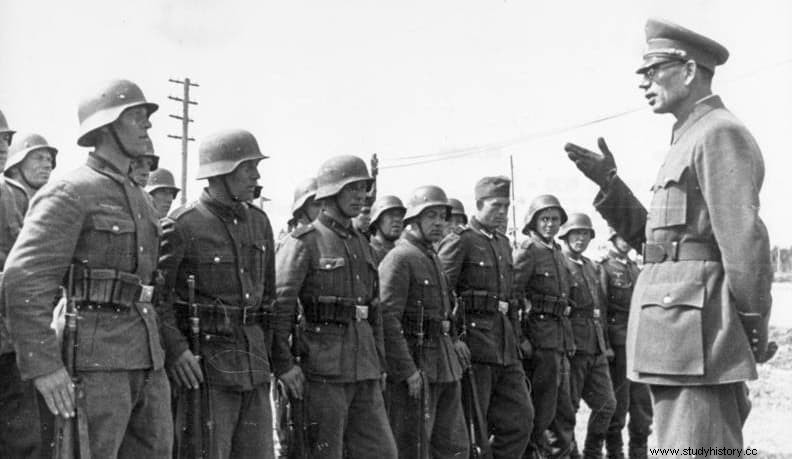
However, given that the war was entering its final phase, clearly adverse for the Third Reich and in need of troops, Himmler managed to convince the Führer to authorize an ROA as such. Thus, the one hundred and thirteen battalions made up of Russians and scattered throughout Europe should join together to form a dozen divisions , although in practice only two could be formed, commanded by Generals Sergei Bunyachenko and Mikhail Meandrov, along with other smaller bodies made up of Cossacks and White Russians. . The set became popularly known by the Soviets as the vlasovtsy , Vlasov's army, despite the fact that he hardly entered into combat and the only battle he would fight against the Red Army would be that of the Oder, already in April 1945, in which he was defeated.
By then, Vlasov had spelled out his political goals in a document known as the Prague Manifesto , which he read in that city on December 14, 1944 before the self-appointed Committee for the Liberation of the Peoples of Russia and in which he proposed a democratic reconversion in his country after overthrowing Bolshevism. The text included at the end a diatribe against the Western powers allied with Stalin, the only way the author found to haggle over Hitler's intention to add an anti-Semitic paragraph. But the reality of the progress of the war was clear and before the imminence of defeat, it was necessary to choose who to surrender to; in his situation it was clear that falling into Soviet hands was equivalent to death, so Vlasov began contacts with the Allies Westerners.
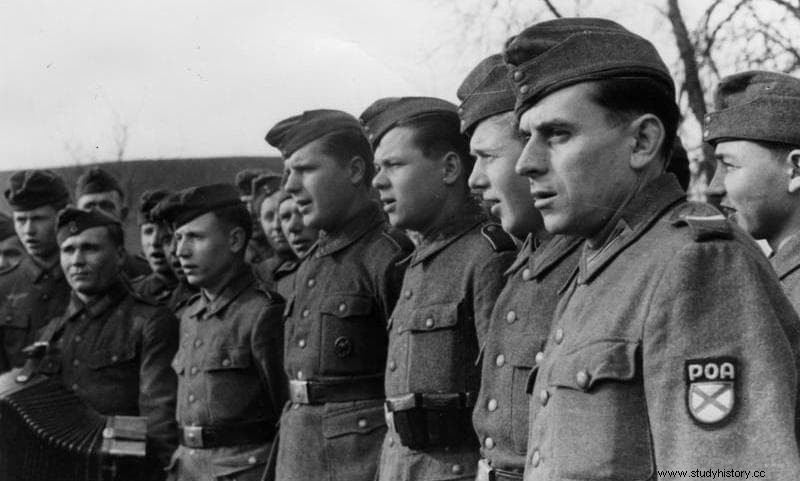
The result of this change in strategy was his participation in the Prague uprising against the Nazis, which took place in May and in which his men changed sides joining the insurgents, as well as passing information to the Red Army to help them take the city.
Next, the vlasovtsy they fled west to surrender to Patton. Many were earlier captured by Soviet partisans; others managed to make contact with the US Third Army to discover, to their horror, that they were being denied asylum and were handed over to Stalin. He had already decreed the death penalty for them and there were not a few who ended up summarily shot in the same place where they were arrested. Only a handful managed to take refuge in Liechstenen and from there flee to Argentina.
Vlasov was extradited to Moscow and hanged on August 2, 1946 along with eleven of his officers. Thousands of his men paid for his fickleness in the Gulag until on September 17, 1955, after Stalin's death, the USSR pardoned the fifty-five thousand who were still alive. However, the image of Vlasov continued and remains negative :In 2001 there was a proposal to rehabilitate him and it was rejected for not meeting the required requirements.
